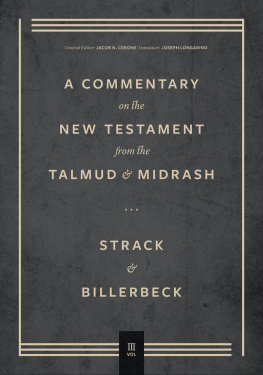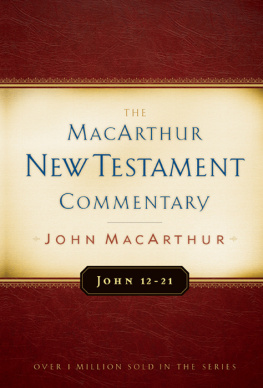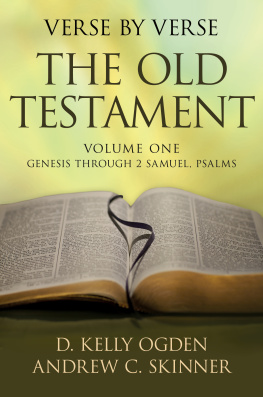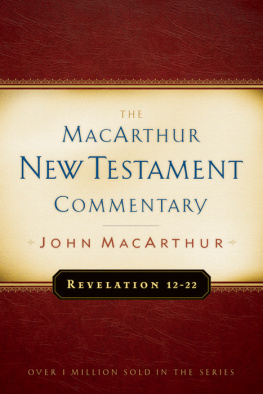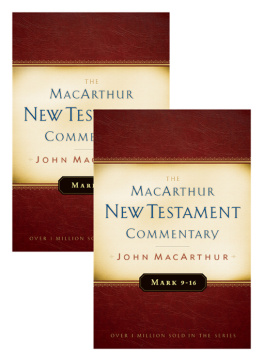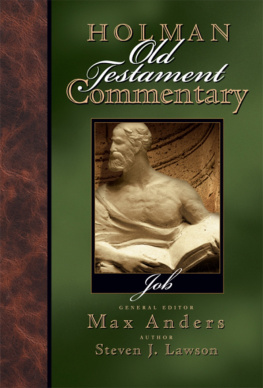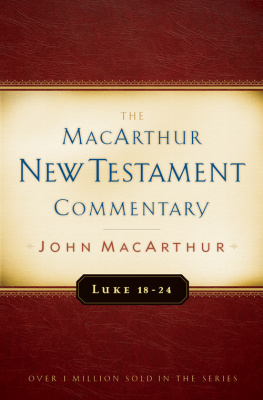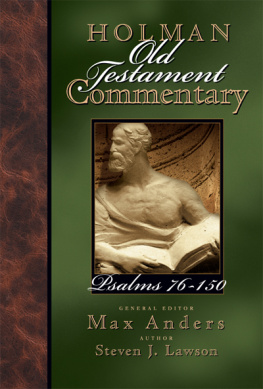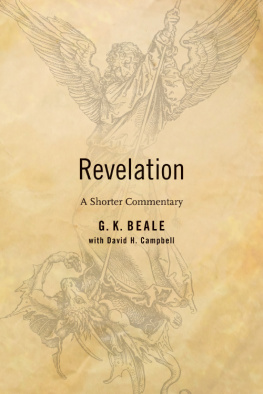A COMMENTARY
on the
NEW TESTAMENT
from the
TALMUD & MIDRASH
Volume 3
HERMANN L. STRACK & PAUL BILLERBECK
JACOB N. CERONE, GENERAL EDITOR
JOSEPH LONGARINO, TRANSLATOR
WITH AN INTRODUCTION BY DAVID INSTONE-BREWER


A Commentary on the New Testament from the Talmud & Midrash, Volume 3
Strack & Billerbeck
Copyright 2021 Lexham Press
Lexham Academic, an imprint of Lexham Press
1313 Commercial St., Bellingham, WA 98225
LexhamPress.com
You may use brief quotations from this resource in presentations, articles, and books. For all other uses, please write Lexham Press for permission. Email us at .
Print ISBN 9781683595472
Digital ISBN 9781683595489
Library of Congress Control Number 2021939610
General Editor: Jacob N. Cerone
Translator: Joseph Longarino
Lexham Editorial: Derek R. Brown, Abigail Stocker, David Bomar
Cover Design: Brian Hintz, Brittany Schrock
CONTENTS
Jacob N. Cerone
Strack and Billerbecks Commentary on the New Testament from the Talmud and Midrash has had an enduring effect on New Testament studies and its relationship to Judaism. As a collection of thousands of possible parallels from rabbinic sources that in some way (e.g., linguistically, culturally, theologically) relate to the corpus of canonical New Testament documents, there is simply no work like it. Although this reference work has been criticized for its dating of rabbinic material, its strong Lutheran distinction between the supposed legalism of Judaism and the grace found in Christ, and the legitimacy of the suggested parallels, it continues to function as a sourcebook for an initial investigation into the potential Jewish backgrounds of New Testament texts (see ). It is because of the enduring value of this work that it appears in English translation for the first time, almost one hundred years after its initial publication in German. Accompanying the translation is an introduction by David Instone-Brewer, who details the reception history of Strack-Billerbeck and charts a course for its responsible usage. All who use these volumes should read his introduction before engaging with the work itself.
Characteristics of this Translation
Stack-Billerbeck is a massive work. The original German edition consisted of four volumes and contained 4,102 pages. There is an unevenness to the work as it attempts to avoid redundancies. Volume 1 covers only the Gospel of Matthew but spans 1,055 pages. Volume 2, however, covers Mark, Luke, and John (including three excurses: The Memra of Jesus, The Feast of Tabernacles, and The Day of Jesus Death) in 867 pages. Volume 3 treats the remainder of the New Testament in 857 pages. The excurses in Volume 4 include important topics on Judaism and the New Testament such as circumcision, the Sermon on the Mount, leprosy and lepers, Elijah, and the resurrection from the dead.
The heart of the work has always been the verse-by-verse commentary and not the excurses in volume 4. For this reason, the publisher of the English edition has decided to leave the excurses untranslated for the time being. Within the commentary, references to the titles of the excurses have been translated in the event that volume 4 is someday published in English (see page xviii for a list of the excurses included in volume 4).
The translation work followed a number of principles. First, the English translation of Strack-Billerbeck is not a revision or an update of the original German text. Each translator aimed to produce an accurate translation of the German text. The editor and translators made no attempt to return to Strack and Billerbecks original sources to correct real or perceived errors; Strack-Billerbeck is a historical work that stands and falls on its own merits. Second, the translators attempted to provide a balance between a smooth English idiom and a faithful rendering of a rather wooden German original. The goal was to produce a translation that was immediately understandable without compromising the integrity of the original work. Third, the names of rabbis and places have been translated into English rather than transliterated (e.g., R. Judah b. Tabbai instead of Jehuda b. abai), using common designations as can be found in many translated editions of rabbinic texts. The spelling has been standardized except in instances where Billerbeck notes unique variants. Finally, Strack and Billerbecks method of transliterating Hebrew/Aramaic has been maintained, though with some minor changes.
Users Guide
A number of general characteristics of Strack-Billerbeck might be confusing at first. The following is a brief guide to help navigate the unique format of the work.
Typeface
In the main body of the text, Strack and Billerbeck shifted between a larger typeface and a smaller typeface. The larger typeface usually, though not always, consisted of their own comments on the passage or on the rabbinic literature that would be included within that section of the commentary. The smaller typeface was reserved for the many citations from source texts that were intended to illustrate or illuminate a specific word, phrase, or clause.
Citation of the Talmud, Mishnah, and Tosefta
Strack-Billerbecks manner of citing the rabbinic literature has been largely preserved, though with minor alterations. For example, pHor 3,48 a ,39 becomes y. Hor. 3.48A.39 ; Schab 108 b becomes b. abb. 108B ; TSchab 7,23 becomes t. abb. 7.23 ; and Nidda 9,7 becomes m. Nid. 9.7 . In their introduction to each of the first three volumes, the authors explain the significance of these abbreviations and the editions used for their work:
Editions and Abbreviations
Jerusalem Talmud: Krakau 1609 ; abbreviation = y.
Babylonian Talmud: Amsterdam 1644ff. (used only in cases of doubt); abbreviation = b.
Tosefta: M. S. Zuckermandel, Pasewalk 1880 ; abbreviation = t.
Manner of Citation
The Mishnah is cited according to chapter and paragraph (e.g., m. abb 3.4 ).
The Babylonian Talmud is cited according to leaves and pages (e.g., b. abb 30B ).
The Jerusalem Talmud is cited according to chapter, sheet, column, and line (e.g., y. Ber. 4.7D.43 ).
Footnotes
There are three different types of footnotes used in these volumes. The first type contains information that previously was in the main text (e.g., parenthetical discussions or citations of secondary literature). These notes can be identified by the fact that they look like common footnotes. For example:
According to G. Dalman , this passage is a late interpolation ( Die Worte Jesu: Mit Bercksichtigung des nachkanonischen jdischen Schriftums und der aramischen Sprache errtert, 2nd ed. [Leipzig: Hinrichs, 1930], 1:221 ).
The second type of footnote begins with the abbreviation S-B (Strack-Billerbeck). For example:
S-B : These words can probably be rightly understood only as a question; for a different understanding, see the rendering at Matt 4:17 B, #2, n. c.
These notes contain material originally presented by Strack-Billerbeck as footnotes. It was necessary to maintain a distinction between these notes and others to aid in locating internal references to footnotes across the the authors refer the reader to the S-B footnote at Matt 5:43, #1, n.

